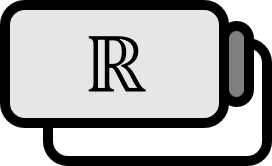The Accumulation Point in the Set of Real Numbers
Definition
Given a point $x \in \mathbb{R}$ on the real line and a subset $A \subset \mathbb{R}$, if for any open set $O$ containing $x$, $O \cap ( A \setminus \left\{ x \right\} ) \ne \emptyset$ holds, then $x$ is defined as a Limit Point. The set of limit points of $A$ is called the Derived set of $A$, and is denoted by $A '$.
Explanation
In the above definition, it’s also fine if the condition is $( O \setminus \left\{ x \right\} ) \cap A \ne \emptyset$. Intuitively, as an example, the derived set of $[a,b]$ is still $[a,b]$.
Since there’s no requirement for the limit points to be inside the given set, the derived set of $(a,b)$ is also $[a,b]$. In English terms, this is very similar to the concept of Limit expressed as $\lim$. On closer inspection, satisfying the condition for ‘any open set’ isn’t much different from the concept of a limit. Although the condition is not too difficult for mathematicians to accept, it could be confusing due to the way it’s expressed.
If we were to differentiate the two terms though, a limit is the ‘value to which a function converges,’ whereas a limit point refers to all possible ‘candidates’ that could become a limit. The limit of the sequence $\displaystyle {{1} \over {n}}$ is $0$, and there’s only one limit point, which is $0$. However, for the interval $(a,b)$, the derived set becomes $[a,b]$, not specifying what exactly the limit is. What can be understood from this is that when discussing limit points, there is no premise that it is unique. It would be beneficial to grasp the concept by proving the simple theorems below.
Theorems
(a) Finite sets have no limit points.
(b) $\mathbb{Q} ' = \mathbb{R}$
Proof
(a)
According to the definition, since a singleton set $A:=\left\{ x \right\}$ will fail $A \setminus \left\{ x \right\} = \emptyset$ no matter how $O$ is chosen, $x$ cannot satisfy the conditions for a limit point.
■
(b)
As rational numbers are also real numbers, this can be easily verified by the density of real numbers.
■
